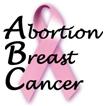FEDERAL REPORT ON CARCINOGENS AND THE ABORTION-BREAST CANCER LINK
By Karen Malec
An official list of "known human carcinogens" released by the Department of Health and Human Services in December 2002 includes steroidal estrogens for the first time. The Report on Carcinogens states that steroidal estrogens are used in estrogen replacement therapy (ERT) and common abortifacient drugs. Both kinds of drugs have been widely utilized by American women. The federal report is available on the National Institute of Environmental Health Sciences website. 1
While certain pharmaceuticals might provide limited medical benefits, women must balance these considerations against the fact that breast cancer is the second greatest cause of cancer among American women.
Clearly, the Report on Carcinogens presents a serious conflict for the National Cancer Institute (NCI), an agency of the Department of Health and Human Services. In February, a panel of grant-dependent scientists chosen by the NCI swept under the rug staggering biological and epidemiological evidence supporting a causal relationship between abortion and breast cancer which has been amassed over the last 46 years.
What do ERT and abortifacient drugs have to do with the abortion-breast cancer (ABC) link? Estrogen overexposure provides the biological explanation for most of the risk factors for breast cancer, including abortion. Estrogen is known to increase the rate of cell division. It causes normal and pre-cancerous cells to multiply. A few days after conception, estrogen levels start climbing, so that by the end of the first trimester, a mother's estrogen level is increased 2000% and her breasts are swollen. Scientists theorize that only a third trimester process, differentiation (maturation of cells), neutralizes the mother's exposure to estrogen and provides her with increased protection against breast cancer.
A booklet published by the Breast Cancer Prevention Institute, "Breast Cancer Risks and Prevention", explains the critical importance of an early first full term pregnancy (before age 25). This influences breast cell maturity and, consequently, a woman's lifetime risk for the disease. The booklet says:
"If a woman does not have a full-term pregnancy (meaning she is childless or nulliparous), she has increased risk for breast cancer, since she never develops (mature, cancer-resistant) type 3 and 4 lobules. If she has children later in life (after age 30), she has increased risk, because, for most of her menstrual life, her estrogen has been stimulating immature (cancer-vulnerable) type 1 and 2 breast lobules. If she has children as a teenager, she has decreased risk of breast cancer, since her breast tissue matures very early in her menstrual life to type 3 and 4 lobules." 2
Similarly, women who experience more menstrual periods during their lives are at greater risk. Why? With each monthly period, they're exposed to more estrogen. This is why the risk is greater for women who have fewer or no children, who breastfeed little or not at all, who experience late menopause or early onset of menstrual periods and who delay their first full term pregnancies.
On the other hand, alcohol consumption, lack of exercise and obesity each increase breast cancer risk because they cause a woman's estrogen levels to be elevated.
Use of diethylstilbestrol (DES) has been linked with increased risk. It is a synthetic estrogen given to diabetic pregnant women at risk for miscarriage starting in the 1940's. For almost 25 years, researchers told women there was no link between DES and breast cancer. However, because the disease develops slowly over time, it took 20 years before researchers were able to detect a trend in the direction of increased risk.
Chris Kahlenborn, M.D. wrote in his book, Breast Cancer: Its Link to Abortion and the Birth Control Pill, that "The risk of DES appears to be greatest in women older than 60." 3
A similar trend can be observed among women of the Roe v. Wade generation. A Report to the Nation on the Status of Cancer for the period 1973 to 1998 from the National Cancer Institute and other agencies reveals that an increasing incidence of breast cancer could be observed starting in 1987 - 14 years after the legalization of abortion. 4 A graph provided by the report's authors, figure 3, clearly shows that the more than 40% increase in breast cancer rates since 1987 was sustained solely by the youngest of three generations - the Roe v. Wade generation.
Just as the risk of breast cancer increases as DES users age, the incidence of the disease is just as likely to rise as the Roe generation ages.
What's the bottom line? Women have become scientists' human guinea pigs. The National Cancer Institute and private cancer organizations are to blame for the nation's out-of-control breast cancer rates. If they really wanted women to know the truth about the ABC link, they would have informed women of the existence of the ongoing research in 1973 when abortion was legalized.
This is why the NCI's leaders were afraid to debate the evidence during its workshop earlier this year. They knew they would lose.
- 1. See www.niehs.nih.gov/oc/news/10thrc.htm (December 11, 2002) Visited May 20, 2003.
- 2. Lanfranchi A, Brind J. Breast Cancer Risks and Prevention. Breast Cancer Prevention Institute (2002) P. 8.
- 3. Kahlenborn C. Breast Cancer: Its Link to Abortion and the Birth Control Pill. One More Soul. New York, New York. (2000) P. 183.
- 4. Howe HL, Wingo PA, Thun MJ, Ries LA, Rosenberg HM, Feigal EG, Edwards BK. Annual report to the nation on the status of cancer, 1973 through 1998, featuring cancers with recent increasing trends. J Natl Cancer Inst 2001;93:824-842.

